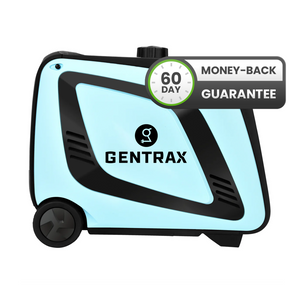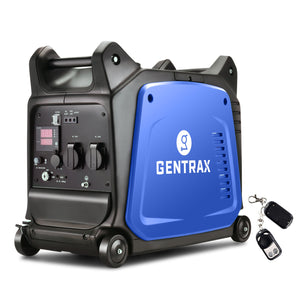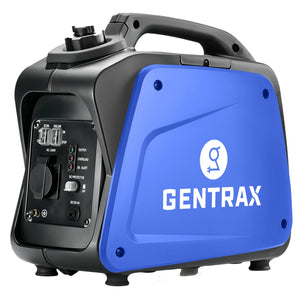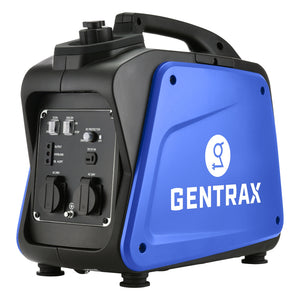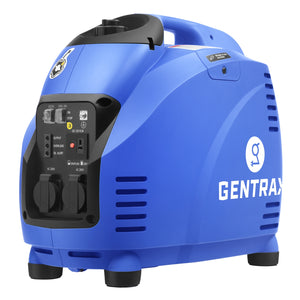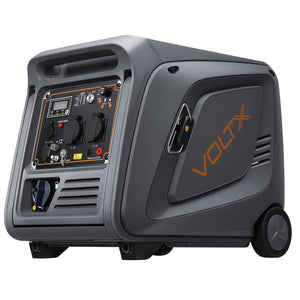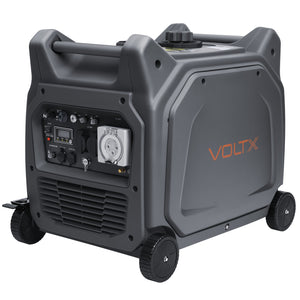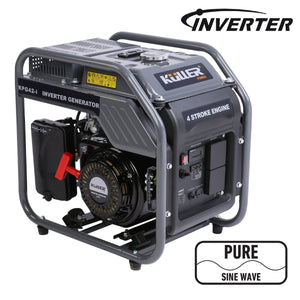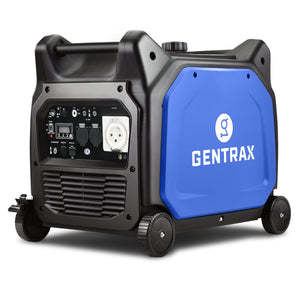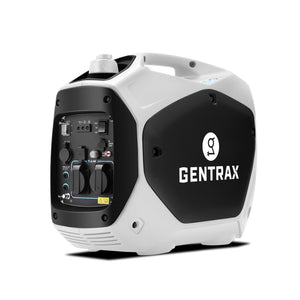Your Essential Guide to Inverter Generator Technology
Whether you're planning a weekend camping trip, preparing for unexpected power outages, or needing reliable electricity at outdoor events, finding the right power solution can make all the difference. An inverter generator represents a significant advancement in portable power technology, offering a sophisticated alternative to traditional generators that's particularly well-suited to our modern electrical needs. Unlike conventional generators that produce raw, fluctuating power, inverter generators use advanced electronics, such as the Gentrax GTX4200 Pro Inverter Generator, to deliver clean, stable electricity that's safe for sensitive devices like laptops, smartphones, and medical equipment. This comprehensive guide will explore everything you need to know about inverter generator technology, from understanding how these innovative power solutions work to selecting the perfect model for your specific requirements, ensuring you can make an informed decision that provides reliable power wherever and whenever you need it.
Understanding How an Inverter Generator Works
At the heart of every inverter generator lies a sophisticated multi-step power conversion process that transforms raw mechanical energy into the pure sine wave electricity your devices crave. The process begins when the engine generates alternating current (AC power), which then passes through a rectifier that converts it to direct current (DC power); before an advanced inverter module transforms it back into clean, stable AC power with a pure sine wave output - the same quality electricity you'd expect from your home outlets.
This technology ensures incredibly low total harmonic distortion (THD), typically below 3-5%, which is crucial for protecting sensitive electronics that can be damaged by the irregular power output of conventional generators. The pure sine wave output means your laptops, televisions, and even delicate medical equipment receive consistent, clean power without the voltage spikes and fluctuations that characterise older generator technology, addressing the fundamental question of how inverter generators work to deliver superior power quality.
Key Advantages of Modern Inverter Generators
The benefits of choosing an inverter generator extend far beyond just clean power output, encompassing impressive fuel efficiency through intelligent eco mode systems that automatically adjust engine speed to match the load, resulting in a runtime of up to 11.2 hours at 50% load whilst significantly reducing emissions. These quiet generators operate at remarkably low noise levels, often below 65 dBA and sometimes as quiet as 51 dBA - comparable to a normal conversation - thanks to variable engine speed technology and sophisticated sound-dampening enclosures that make them ideal for noise-sensitive environments.
Inverter generator models such as the Gentrax GT3500 Inverter Generator, GTX4200 Pro Inverter Generator, GTX3500 Inverter Generator, TrekGen 3500 Inverter Generator, and the VoltX VX6600 2-Wire Inverter Generator embody this philosophy. Their lightweight, compact build—complete with ergonomic handles and optional wheel kits—makes transport and storage effortless. Many of these units also support parallel capability, so you can link two generators for extra wattage whenever demand spikes. Crafted from robust, weather-resistant materials, they’re engineered for long-term reliability, which explains why many consider them the best inverter generators available for both recreational and emergency use.
Popular Uses for Your Inverter Generator
From powering your caravan's air conditioning on a sweltering summer night to keeping essential appliances running during unexpected blackouts, the versatility of an inverter generator makes it an invaluable addition to any household or adventure kit. Camping enthusiasts and caravanners particularly appreciate these quiet generators for camping, as they can run fridges, lights, and charging stations without disturbing the peaceful outdoor atmosphere or annoying fellow campers.
As a reliable generator for home backup power, these units excel at maintaining critical systems during storms, floods, or bushfire-related outages, keeping refrigerators operational, medical devices powered, and communication devices charged when you need them most. Outdoor event organisers, market stallholders, and remote workers find these portable power units indispensable for running equipment where grid power isn't available, whilst emergency services often rely on them for powering critical equipment in disaster response situations, demonstrating the broad spectrum of uses for inverter generators across both recreational and essential applications.
Choosing the Right Inverter Generator For You
Selecting the perfect inverter generator requires careful consideration of your power requirements. Start by understanding the difference between running watts and starting (surge) watts. For instance, while a refrigerator might run on 600 watts, it could require 1,200 watts to start up, making a 2,000W generator or 3.5kVA generator model suitable for multiple appliances. Calculate your total power needs by listing all devices you plan to run simultaneously, noting that typical household requirements range from 1,000 watts for basic camping needs to 7,000 watts for comprehensive home backup, helping answer the common question of what size inverter generator do I need.
Consider fuel type options, with petrol generators being most common for their availability and ease of use. Evaluate crucial features like overload protection, low oil shutdown, eco-mode for fuel efficiency, and the number and type of outlets, including USB ports and standard 240V sockets. Most importantly, choose a model that meets local electrical safety standards. Look for certification marks such as RCM approval and AS/NZS compliance. Make sure it also includes a solid warranty and is backed by a reputable supplier who can provide support and service when needed.
Safe Operation Essential Guidelines
Operating an inverter generator safely requires strict adherence to fundamental precautions, with carbon monoxide prevention being paramount. NEVER run your generator indoors or in any enclosed or partially enclosed space, including garages, sheds, tents, or caravans, and always position it at least 6 metres away from buildings, windows, doors, and vents, considering models with CO shutoff features for additional protection. Always refuel the generator only when it is completely turned off and has cooled down. Store fuel in approved containers, well away from any ignition sources.
Electrical connections also require special care. Home backup installations must be carried out by a licensed electrician using a compliant changeover switch to prevent dangerous back-feeding into the grid. For direct appliance connections, use heavy-duty, outdoor-rated extension cords fitted with RCD safety switches. Regular maintenance, including oil changes, filter replacements, and spark plug checks, ensures both safety and optimal performance, whilst proper earthing according to manufacturer specifications and avoiding overload by staying within rated capacity limits are essential for safe operation in all conditions. Remember to protect your generator from wet weather unless specifically designed for such use.
Considering Alternatives: Portable Power Solutions
Whilst inverter generators excel at providing substantial, continuous power for extended periods, the modern portable power landscape offers complementary solutions that might better suit specific situations or work alongside your generator for a comprehensive power strategy. Portable power stations, featuring advanced lithium batteries, provide silent, emission-free operation perfect for indoor use or noise-sensitive environments. These are suitable for charging devices, running small appliances, or powering CPAP machines overnight, and can be recharged via mains power, car outlets, or solar panels. Solar panels and blankets offer sustainable, renewable charging options for these battery systems, creating truly off-grid power solutions ideal for extended camping trips or emergency preparedness where fuel availability might be limited. These alternatives shouldn't be viewed as direct replacements for inverter generators in all situations, but rather as complementary technologies that address specific niches - choose battery systems for quiet, indoor-safe operation with lower power needs, and inverter generators when you require sustained high-output power for multiple appliances or heavy-duty equipment.
Final Thoughts on Your Power Needs
Investing in an inverter generator represents a smart decision for anyone seeking reliable power that combines the robust output of traditional generators with the sophisticated technology needed for today's sensitive electronics, offering clean power, quiet operation, remarkable fuel efficiency, and excellent portability in one comprehensive package. The key to maximising your investment lies in carefully matching your chosen generator's capacity and features to your specific power requirements, whether that's a compact 1,000-watt unit for weekend camping trips or a powerful 5,000-watt model for comprehensive home backup during emergencies.
Above all, remember that safe operation through proper positioning, regular maintenance, and adherence to electrical safety guidelines ensures your inverter generator will provide years of dependable service, delivering the peace of mind that comes from knowing you have a reliable power solution ready whenever life demands it, making every adventure more comfortable and every emergency more manageable.
Frequently Asked Questions
- What is an inverter generator?
- How do inverter generators work?
- Is it safe to run an inverter generator in the rain?
- Where should I store my inverter generator when not in use?
- Where can I find your Generator Buying Guide?
- What are the main benefits of using an inverter generator?
- What is the difference between an inverter generator and a conventional generator?
- Are inverter generators safe to use with sensitive electronics like laptops and TVs?
- How quiet are inverter generators typically?
- What size inverter generator do I need for my caravan or camping setup?
- Can I connect two inverter generators together for more power?
- What kind of maintenance does an inverter generator require?
- How much fuel does an inverter generator use compared to older types?

